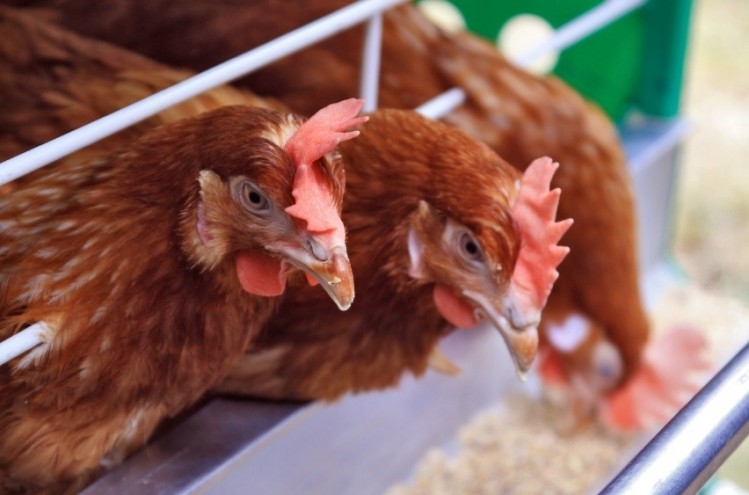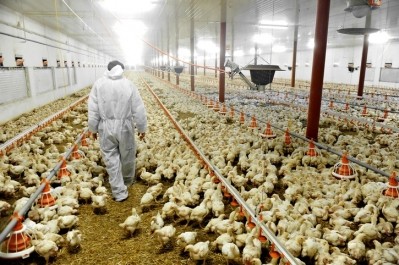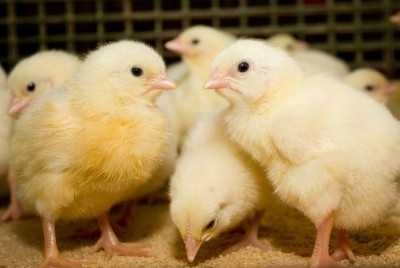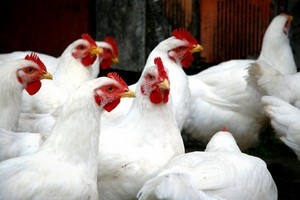Poultry intestinal health on Amlan's radar

We caught up with company president Ron Cravens at IPPE in Atlanta last month to hear more about Varium and its development.
The product seeks to improve intestinal health in poultry by removing toxins before they can do damage, he told FeedNavigator.
“We’ve been focused on the gut barrier function in total,” he said. “That includes the mucus, the epithelial cells and the underlying tissues of the immune system. What we like to talk about is functioning in front of the wall, in the wall and behind the wall – this is where the interactions are going on.”
Varium was in development for about five years.
In front of the intestinal wall, the product works by absorbing toxins created by bacteria in an animal’s intestinal tract before they can do damage, said Cravens. “The interaction is almost instantaneous, you don’t have to wait for a change in microbiota, and you don’t have to wait for the bacteria to die,” he added.
“These toxins cause damage to the intestinal lining, and that leads to the diseases we think about,” he said. “In particular, necrotic enteritis is one that we were focusing on.”
The product also looks to strengthen the intestinal wall so that it will better manage stressors or repair itself faster, he said. Behind the wall, it looks to improve immune functioning.
“It’s really a three-pronged approach directed at the anatomical and functional features of the intestinal barrier and the product then brings elements to bear to do those two things,” he said.
However, he said, it also shows promise when use in animals who aren’t facing a challenge.
“The question was, is there any benefit to the product even if there isn’t necrotic enteritis?” he said. “After a series of studies, it became clear that the product is providing benefit in the form of improved gain, reduced mortality, improved feed conversion, even in the absence of any disease challenge. The performance benefit was equal to that of commonly used antibiotics.”
As the animal production industry moves away from the use of certain antibiotics for growth-promotion, the additive also can offer an alternative for growth promotion, said Cravens.
“They use antibiotic growth promoters because they can get more performance out of the animal, and better feed efficiency under intensive agricultural practices,” he said. “If you want to maintain your practices, and you want to maintain the things you’ve historically done, you need something to fill that void.”
Research findings
A series of research projects compared the use of Varium and antibiotics in broiler diets with and without a disease challenge. The work was done by both company researchers and a team from the Southern Poultry Research Center in Athens, Georgia.
One study compared broilers on a diet that included Varium with those getting an antibiotic, during a challenge from Clostridium perfringens, said researchers.
In the study, 448 birds were given one of seven treatments for 28 days, they said. Treatments had eight replications.
Treatments included a non-challenged control, a challenged control, challenged birds given 50g per ton bacitracin (BDM), challenged birds given 0.1% Varium, challenged birds given 0.25% Varium, challenged birds given both 0.1% Varium and bacitracin and birds given 0.25% Varium and bacitracin, they said.
The intestines of a sample of birds were examined for necrotic enteritis on day 21, they said.
Weight gain was the higher for non-challenged control group birds than the challenged control group, they said. But, feeding either bacitracin or Varium at either level returned in similar results to the non-challenged control.
“Feeding BMD, Varium at either inclusion, or the combinations to challenged birds resulted in similar gain compared to each other,” said researchers. “Gain was not higher than that of the challenged birds when BMD, Varium (either dose), or the combinations were fed, but nor was it different from that of the unchallenged CON birds.”
Feed conversion was similar for non-challenged control group birds and treated birds, they said. Lesion scores and mortality rates were better for treated birds than the challenged, control group birds.
In the second experiment, birds were given one of three treatments for 28 days, said researchers. Birds received either a control corn-soybean meal diet, or that diet with 50g per ton bacitracin or the control with Varium.
Birds getting Varium had weight gain that was between, but not significantly different than the other two groups, they said.
“The mortality adjusted feed conversion ratio improved for the period d‐0 to 14 and overall when BMD or Varium were added to the Control diet,” they said. “The feed conversion ratios had values of 1.324, 1.276 or 1.260 for d‐0 to 14, and 1.451, 1.425, 1.428 for the overall period for the Control, BMD, and Varium treatments, respectively. There was no significant difference between the BMD and Varium treatments for feed conversion ratio during these time‐periods.”








